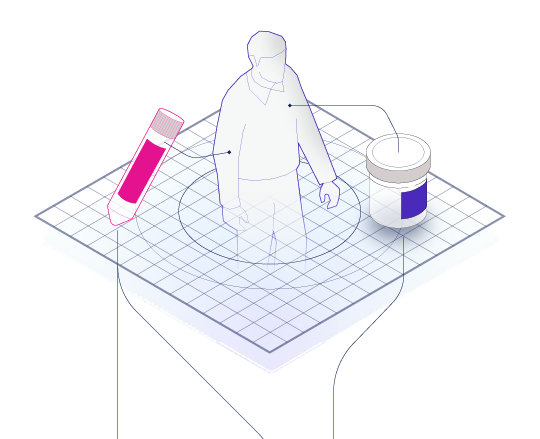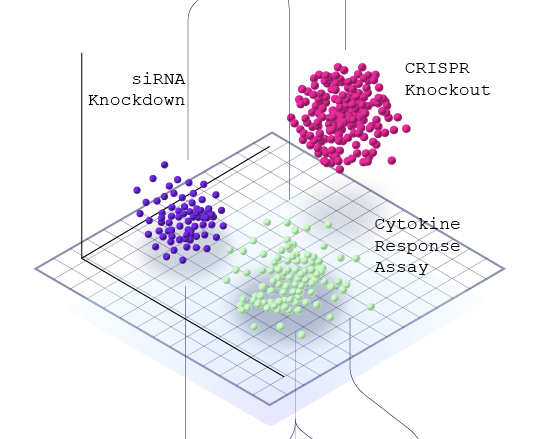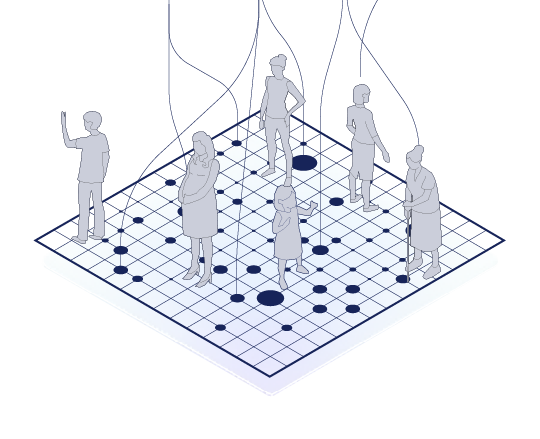
// Drug Discovery
Our Drug Discovery Platform
Through the use of our patient testing platform, we have been able to analyze patient samples for their response to approved therapies, while storing data and excess tissue in our biobank for further multi-omic analysis as part of our drug discovery platform


01/ Tissue Analysis
Frozen samples can be analyzed using multi-omic approaches, including genomics, transcriptomics and proteomics. Our existing characterization techniques include spatial transcriptomics and flow cytometry.
02/ Target Identification
Tumor tissue is compared to normal tissue (including matched normal adjacent tissue) to find cancer-specific targets. Responder and non-responder samples are compared to identify targets found in patients with resistance to therapy, or who go on to develop resistance to therapy.
03/ Validation Screens
The targets identified using this process are then tested on target validation screens. Based on the class of target, these assays can include siRNA knockdown screens, CRISPR knockout screens and cytokine/immune-response assays.
04/ Drug Discovery
Targets with a strong mechanistic effect that can be modulated for cancer control are suitable for drug discovery. Once drug candidates have been identified, Pear Bio’s 3D immune-microtumors are used to test efficacy and potential combination therapy partners.
05/ Patient Stratification
Drug candidates that we move into the clinic can be further supported by our patient stratification platform to identify predictive biomarkers for single-agent and combination therapy usage in indications of interest.



01/ Tissue Analysis
Frozen samples can be analyzed using multi-omic approaches, including genomics, transcriptomics and proteomics. Our existing characterization techniques include spatial transcriptomics and flow cytometry.

02/ Target Identification
Tumor tissue is compared to normal tissue (including matched normal adjacent tissue) to find cancer-specific targets. Responder and non-responder samples are compared to identify targets found in patients with resistance to therapy, or who go on to develop resistance to therapy.

03/ Validation Screens
The targets identified using this process are then tested on target validation screens. Based on the class of target, these assays can include siRNA knockdown screens, CRISPR knockout screens and cytokine/immune-response assays.

04/ Drug Discovery
Targets with a strong mechanistic effect that can be modulated for cancer control are suitable for drug discovery. Once drug candidates have been identified, Pear Bio’s 3D immune-microtumors are used to test efficacy and potential combination therapy partners.

05/ Patient Stratification
Drug candidates that we move into the clinic can be further supported by our patient stratification platform to identify predictive biomarkers for single-agent and combination therapy usage in indications of interest.
Smarter Combination Therapies
Cancer is increasingly treated with combinations of drugs instead of individual therapies
However, selecting combination therapies for clinical development is a suboptimal process that relies on combining known biological pathways instead of rigorous experimental validation. The Pear Bio platform tests existing combination therapies to predict patient response, and we can use those insights to empirically validate novel combination therapies for our internal drug discovery pipeline to get complementary and synergistic responses.
Explore Our Pipeline

See what we have in the works
Our drug discovery pipeline is focused on a range of indications from breast to lung cancer. Explore more about our pipeline.
Learn more

